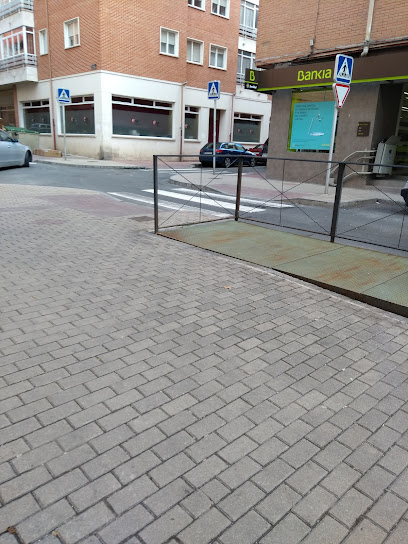
Discover the Majesty of the Royal Monastery of Santo Tomás
Explore the Royal Monastery of Santo Tomás, a stunning Gothic masterpiece in Ávila, Spain, rich in history and serenity.
The Royal Monastery of Santo Tomás in Ávila is a captivating blend of history, architecture, and spirituality. This magnificent site draws tourists with its stunning Gothic design, rich historical significance, and serene atmosphere. Visitors can explore beautifully preserved interiors, witness exquisite art, and enjoy the tranquil gardens that surround this UNESCO World Heritage site.
A brief summary to Royal Monastery of Santo Tomás
- Pl. Granada, 1, Ávila, Ávila, 05003, ES
- +34920352237
- Visit website
- Monday 10:30 am-9 pm
- Tuesday 10:30 am-9 pm
- Wednesday 10:30 am-9 pm
- Thursday 10:30 am-9 pm
- Friday 10:30 am-9 pm
- Saturday 10:30 am-9 pm
- Sunday 10:30 am-9 pm
Local tips
- Visit during weekdays to avoid large crowds and enjoy a more peaceful experience.
- Take a guided tour to gain deeper insights into the history and significance of the monastery.
- Don't miss the gardens; they offer a beautiful setting for photographs and relaxation.
- Check the opening hours before your visit, as they can vary seasonally.
- Consider purchasing a combined ticket if you plan to visit other nearby attractions.
Getting There
-
Car
If you are traveling by car, the Royal Monastery of Santo Tomás is located at Pl. Granada, 1, 05003 Ávila. From the province of León, take the A-6 towards Madrid and then continue on the AP-51 towards Ávila. Take exit 109 for N-403 towards Ávila. Continue straight into the city center. Use GPS coordinates (40.6504904, -4.68947) for precise navigation. There is limited street parking available nearby, so be prepared to look for a space or consider using a public parking facility.
-
Public Transportation
For those using public transportation, take a train or a bus to Ávila. If you are coming from Madrid, RENFE trains run frequently from Madrid-Chamartín station to Ávila and take about 1.5 hours. Once you arrive at Ávila train station, you can take a local bus (Line 2) or a taxi to reach the Royal Monastery of Santo Tomás, which is approximately 10 minutes away by bus or taxi. The bus fare is around €1.50.
-
Walking
If you are already in the city center of Ávila, the Royal Monastery of Santo Tomás is within walking distance. From the Plaza de Santa Teresa, head southwest on Calle de la Catedral, and then turn left onto Calle de Tomás Luis de Victoria. Continue straight, and you will reach the monastery in about 10-15 minutes.
Discover more about Royal Monastery of Santo Tomás
Iconic landmarks you can’t miss
Monumento a las Grandezas de Ávila.
0.7 km
Explore the Monumento a las Grandezas de Ávila, a majestic memorial that celebrates the rich history and cultural heritage of this enchanting Spanish city.
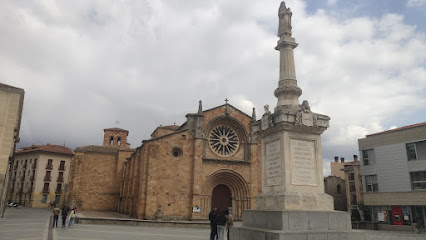
Pl. de San Vicente
1.0 km
Explore the historical beauty of Pl. de San Vicente in Ávila, a picturesque square surrounded by centuries of rich culture and stunning architecture.

Pl. Corral de las Campanas, 1
1.1 km
Experience the enchanting Pl. Corral de las Campanas in Ávila, Spain, where history, culture, and vibrant local life converge.
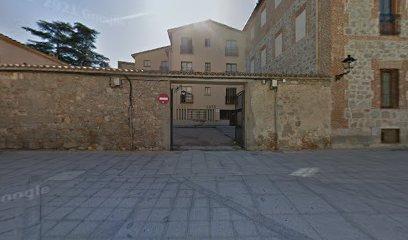
Pl. Corral de las Campanas
1.1 km
Explore the captivating Pl. Corral de las Campanas in Ávila, where history, culture, and stunning architecture come together to create an unforgettable experience.
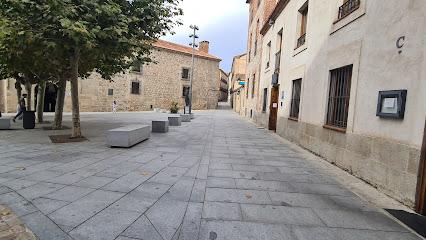
C. Blasco Jimeno, 8
1.2 km
Discover the historical charm of C. Blasco Jimeno in Ávila, a picturesque street showcasing medieval architecture and vibrant local culture.
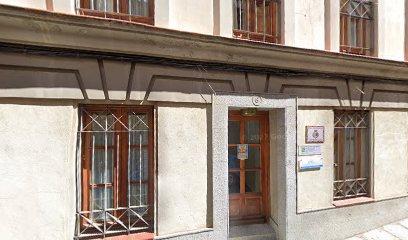
Monumento Ávila, ciudad patrimonio de la humanidad
1.5 km
Explore the historic Monumento Ávila, a UNESCO World Heritage Site memorial, reflecting the rich cultural heritage of the stunning city of Ávila.

Puerta de San Isidro o de la Malaventura en la Muralla de Ávila
1.5 km
Discover the historical essence of Ávila at the stunning Puerta de San Isidro, a gateway to the city's medieval charm.
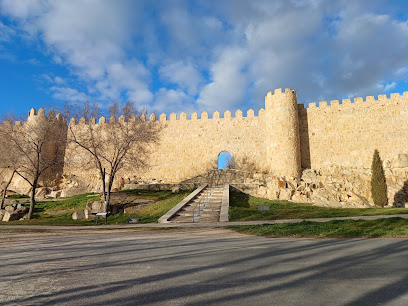
Royal Site of San Lorenzo de El Escorial
46.2 km
Explore the Royal Site of San Lorenzo de El Escorial, a majestic blend of history, art, and architecture nestled in the heart of Spain.

Basílica de El Escorial
46.3 km
Explore the Basilica de El Escorial, a stunning Renaissance church in San Lorenzo de El Escorial, showcasing Spain's rich history and architectural brilliance.
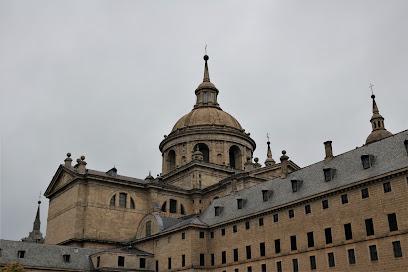
Camino de Santiago de Madrid (y Vía XXIV Romana)
53.5 km
Discover the breathtaking landscapes and rich history along the Camino de Santiago de Madrid, a pilgrimage route that enchants travelers from around the world.
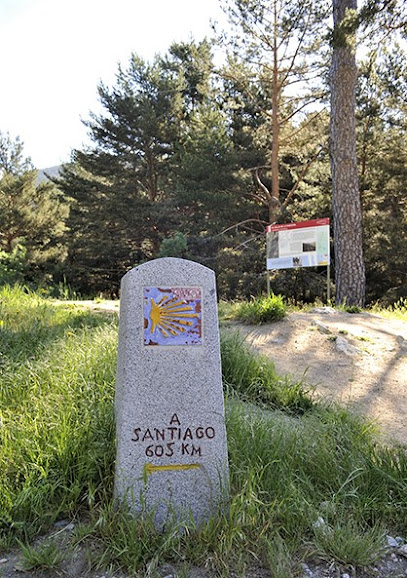
Camino de Santiago desde Madrid
54.5 km
Experience the rich history and breathtaking landscapes of the Camino de Santiago desde Madrid, a unique pilgrimage connecting culture and spirituality.
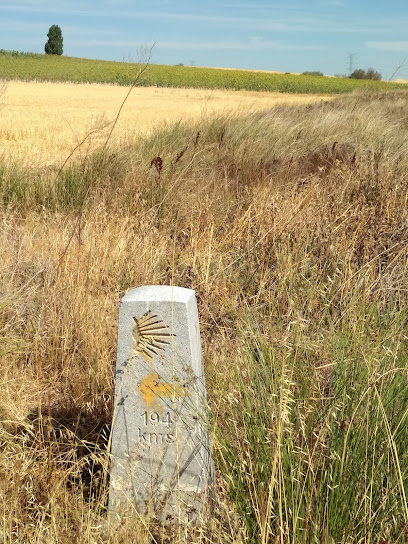
Plaza San Pedro
54.8 km
Explore the vibrant Plaza San Pedro in Aldea del Fresno, a perfect blend of culture, community, and picturesque Spanish charm.

Mirador del Alcázar y los dos Valles
57.5 km
Discover the stunning panoramic views of the Alcázar and the valleys at the Mirador del Alcázar y los dos Valles in Segovia, Spain.
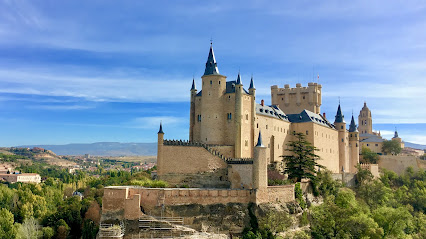
Mirador del Último Pino
57.5 km
Discover the stunning views at Mirador del Último Pino, an observation deck in Segovia that captures the beauty of Spain's landscape.

Alcázar de Segovia
57.7 km
Discover the enchanting Alcázar de Segovia, a fairy-tale castle steeped in history, offering breathtaking views and captivating architecture in the heart of Spain.

Unmissable attractions to see
Museo de Ciencias Naturales
0.0 km
Discover the fascinating world of nature at Museo de Ciencias Naturales in Ávila, a captivating museum for all ages.
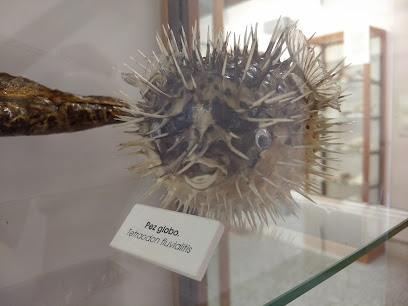
Museo de Arte Oriental
0.0 km
Explore the exquisite collection of Asian art at Museo de Arte Oriental in Ávila, a cultural treasure trove that captivates visitors from around the world.
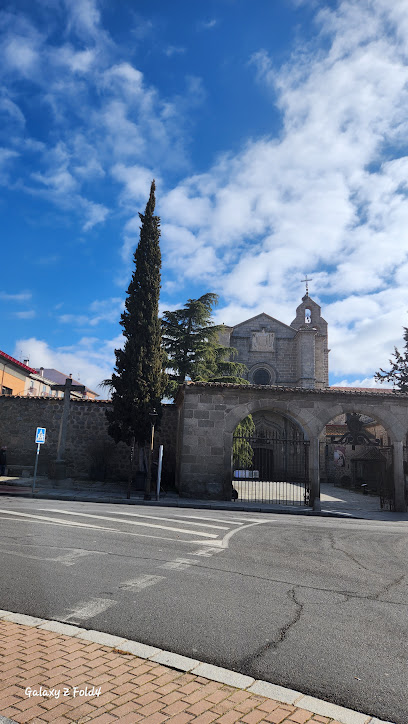
Convento de San José (Carmelitas Descalzas)
0.6 km
Explore the Convento de San José, a tranquil Carmelite nunnery in Ávila, where history and spirituality intertwine in a serene atmosphere.
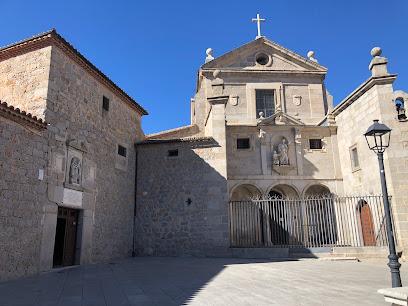
Ancient Convent of Saint Anne
0.6 km
Experience the serene beauty and historical significance of the Ancient Convent of Saint Anne in Ávila, a peaceful retreat for travelers.

Plaza del Ejercito
0.6 km
Explore the vibrant Plaza del Ejercito in Ávila, a cultural hub that showcases the city's rich history and lively local scene.
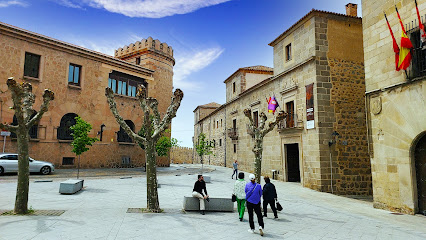
Real Monasterio de Santa Ana
0.6 km
Discover the tranquil beauty and historical significance of Real Monasterio de Santa Ana in Ávila, a serene retreat steeped in cultural heritage.
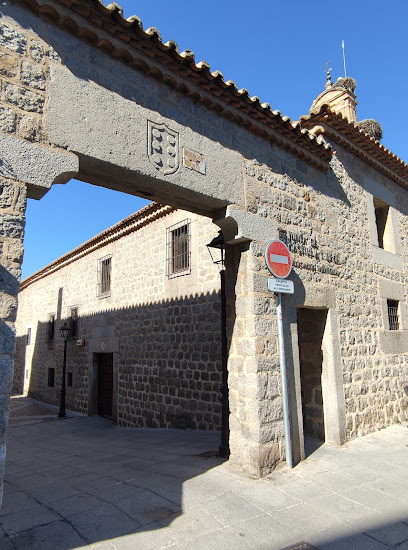
Parish of St. Peter the Apostle
0.6 km
Explore the exquisite Parish of St. Peter the Apostle in Ávila, a haven of tranquility and architectural beauty in the heart of historic Spain.

Snooty Steps
0.6 km
Explore the enchanting Snooty Steps in Ávila, Spain, a picturesque tourist attraction revealing the city's medieval charm and stunning landscapes.
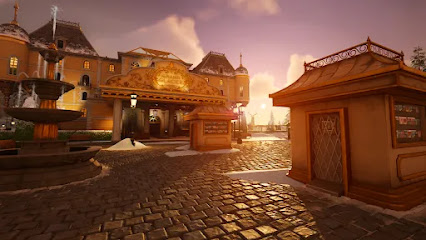
Plaza de Santa Teresa de Jesus
0.7 km
Experience the vibrant atmosphere and rich history at Plaza de Santa Teresa de Jesús, the heart of Ávila's cultural scene.
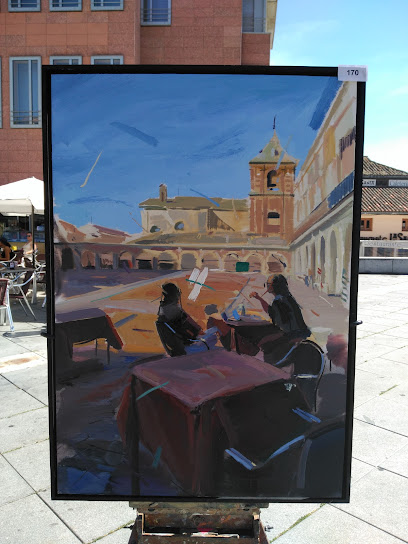
Plaza del Mercado Grande, Plaza de Santa Teresa de Jesus
0.7 km
Discover the vibrant heart of Ávila at Plaza del Mercado Grande, where culture, cuisine, and community come alive in a picturesque setting.
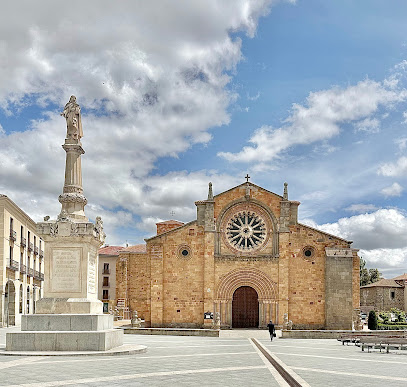
Feria del libro de Ávila
0.8 km
Explore the enchanting Feria del Libro de Ávila, a literary festival celebrating books, authors, and culture in the heart of Spain's historic city.
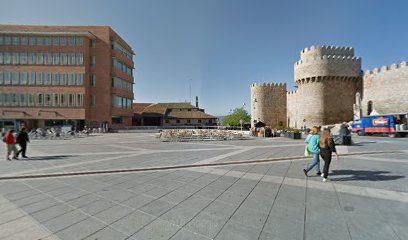
Monumento a Isabel La Católica
0.8 km
Explore the Monumento a Isabel La Católica in Ávila, a stunning tribute to Queen Isabella I and a must-see for history buffs and travelers alike.

Monumento a Santa Teresa de Jesús
0.8 km
Explore the Monument to Saint Teresa of Jesus in Ávila, a mesmerizing sculpture celebrating Spain's spiritual heritage amid stunning medieval architecture.
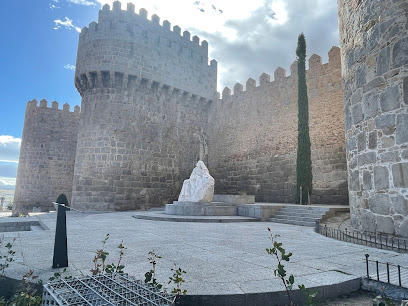
Escultura del Poder del Señor
0.8 km
Discover the Escultura del Poder del Señor in Ávila, a captivating tourist attraction showcasing art and culture in a historic setting.
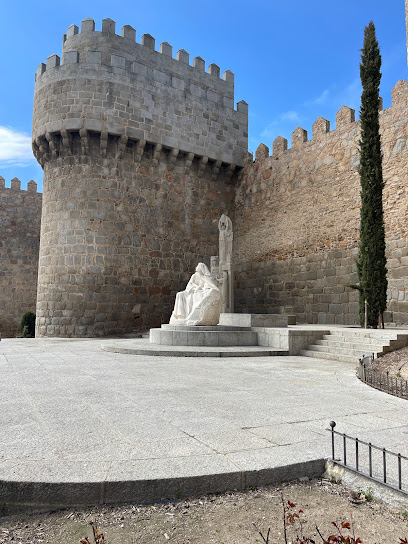
Puerta del Alcázar
0.8 km
Experience the rich history and architectural beauty of Puerta del Alcázar, a must-visit landmark in the heart of Ávila, Spain.
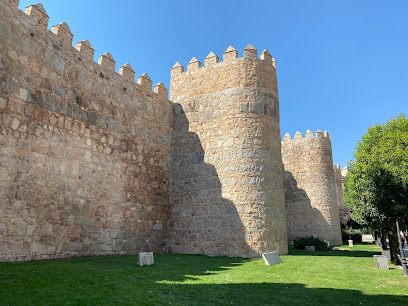
Essential places to dine
Restaurante Sur Café Bar
0.2 km
Discover delectable Spanish cuisine at Restaurante Sur Café Bar in Ávila - where authentic flavors meet a cozy atmosphere.
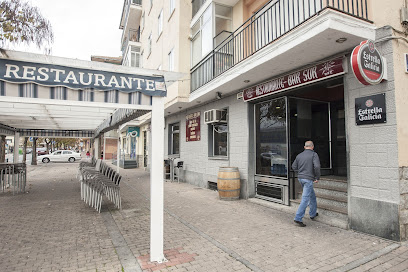
Cervecería La Cigueña
0.6 km
Experience the best of local brews and delicious tapas at Cervecería La Cigueña in Ávila – where every sip tells a story.

Barbacana
0.7 km
Experience authentic Spanish cuisine at Barbacana in Ávila - where tradition meets flavor in every dish.
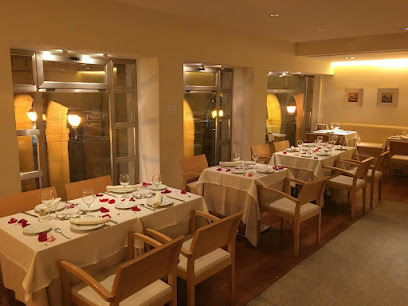
Restaurante La Santa
0.7 km
Savor authentic Castilian cuisine at Restaurante La Santa in Ávila – a true culinary experience steeped in tradition.
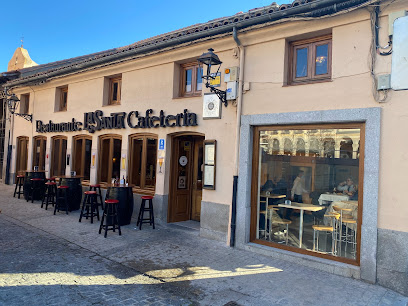
Restaurante Bococo
0.8 km
Experience authentic Mediterranean flavors at Restaurante Bococo in Ávila - where every meal is a celebration of taste.

Barro Restaurante
0.8 km
Discover culinary excellence at Barro Restaurante in Ávila – where traditional flavors meet modern innovation for an unforgettable dining experience.

Restaurante Pipol
0.8 km
Discover delightful hamburgers and local flavors at Restaurante Pipol in Ávila—where taste meets tradition in an inviting atmosphere.
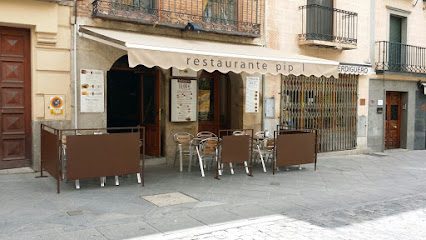
La Rubia de Ávila Restaurante
0.8 km
Discover authentic Spanish flavors at La Rubia de Ávila, where traditional dishes meet warm hospitality in the heart of Ávila.
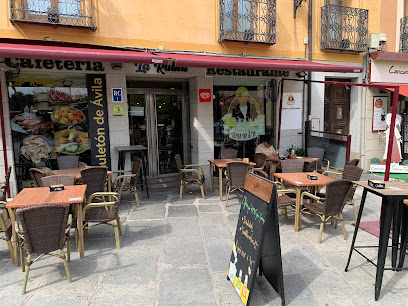
La Tere Gastrobar
0.8 km
Discover authentic Spanish tapas and vibrant atmosphere at La Tere Gastrobar in Ávila - where every bite tells a story.
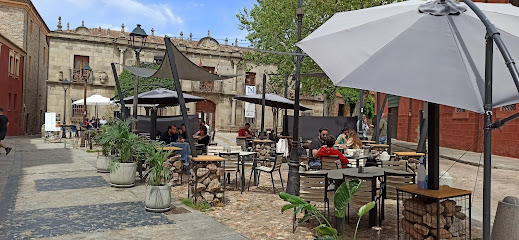
Restaurante El Rincón de Jabugo
0.8 km
Savor authentic Spanish cuisine at Restaurante El Rincón de Jabugo in Ávila—where tradition meets taste in every dish.
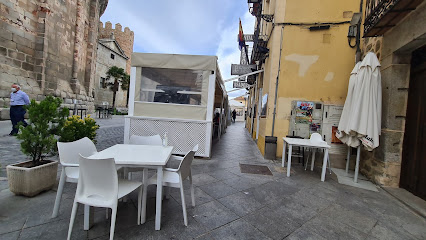
Las Cancelas
0.8 km
Discover Las Cancelas: A unique blend of dining and lodging that captures the culinary spirit of Ávila.

La Barcaccia
0.8 km
Experience authentic Italian cuisine at La Barcaccia in Ávila – where every meal is a celebration of flavor and tradition.
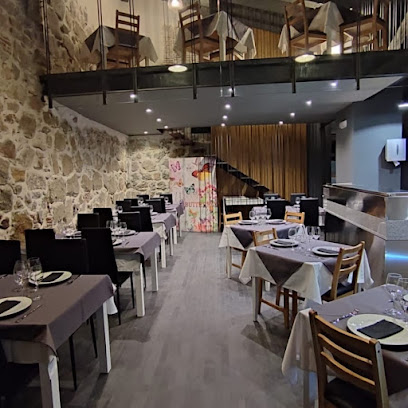
Alavirulé
0.9 km
Experience authentic Spanish cuisine at Alavirulé in Ávila – where delicious tapas meet vibrant nightlife in a charming setting.
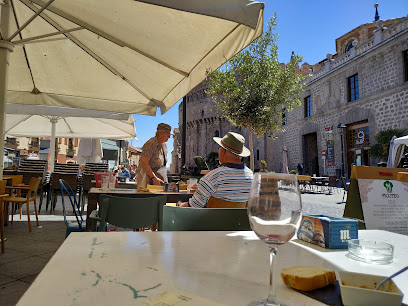
Casa de Postas
0.9 km
Discover Casa de Postas in Ávila – where traditional Spanish flavors meet delicious barbecue delights.
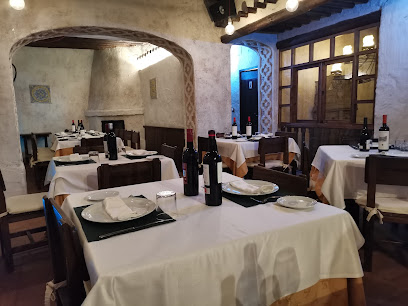
Restaurante Siglodoce
0.9 km
Discover authentic Mediterranean and Spanish flavors at Restaurante Siglodoce in Ávila – where every meal is a celebration of local gastronomy.
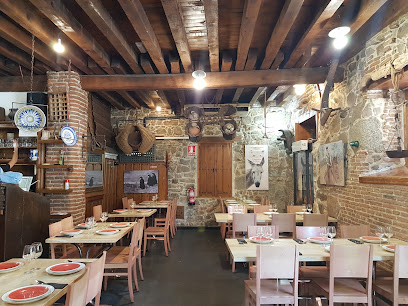
Markets, malls and hidden boutiques
C&L Complementos
0.3 km
Explore C&L Complementos in Ávila for unique gifts, stylish belts, and luggage repair services - perfect for every traveler!

Regalos Juanjo Menaje
0.3 km
Explore Regalos Juanjo Menaje in Ávila for unique gifts and souvenirs that celebrate the local culture and craftsmanship.
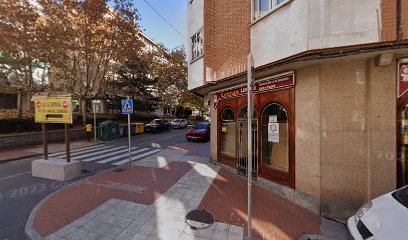
JoviOcio Ávila
0.4 km
Discover unique collectibles and toys at JoviOcio Ávila, a haven for enthusiasts and casual shoppers alike in the historic city of Ávila.
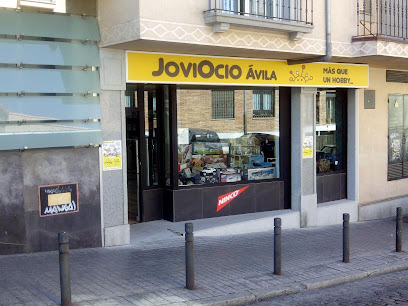
Avila Shop Activaciones
0.6 km
Explore Avila Shop Activaciones for cutting-edge mobile devices and exceptional service in the heart of historic Ávila, Spain.

Sol y Canela
0.6 km
Discover unique women's fashion at Sol y Canela, a charming store in the heart of Ávila offering stylish clothing and accessories.

IMC SPAIN AVILA
0.6 km
Explore the essence of Spanish craftsmanship at IMC Spain Avila, your destination for unique home goods and charming decor.
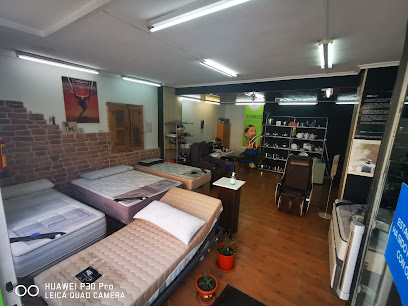
Karibushop-
0.7 km
Explore Ávila's finest fashion destination at Karibushop, where elegance meets personalized service in a charming boutique atmosphere.
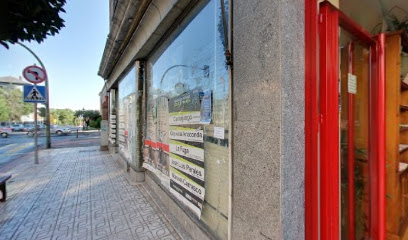
Aloe Shop Ávila
0.7 km
Discover Aloe Shop Ávila for a perfect blend of cosmetics, children's clothing, and unique rock specimens in the heart of Spain's historic city.

Boutique de La Fruta
0.7 km
Explore the delightful Boutique de La Fruta in Ávila for fresh fruits and local delicacies, perfect for a taste of authentic Spanish flavor.

CBD Avila | Sativa Boutique
0.8 km
Discover premium CBD products at CBD Avila | Sativa Boutique, a leading cannabis store in the heart of Ávila, Spain, offering quality and education.
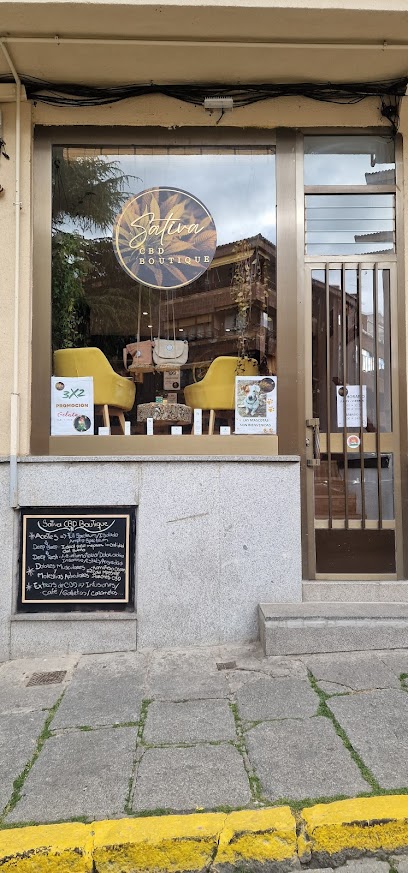
CUPLÉ
0.8 km
Explore the chic styles and elegant fashion at CUPLÉ, Ávila's premier clothing and accessories boutique for women.

Lencería Inés Mercería
0.8 km
Explore Lencería Inés Mercería - Ávila's premier lingerie, knitting, and sewing supply destination, offering unique textiles and expert service.

D´nsueño Novias
0.8 km
Discover D´nsueño Novias, where bridal dreams come to life in Ávila with exquisite couture and outstanding service.

Mercería Caty
0.8 km
Discover Mercería Caty in Ávila, a paradise for crafters offering a wide selection of quality notions and exceptional service.
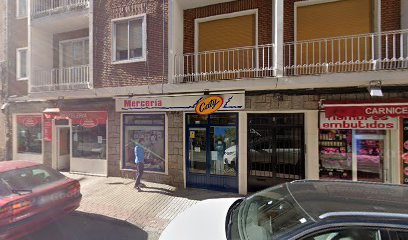
Jaime Lozano Rodríguez
0.8 km
Explore the exquisite collection at Jaime Lozano Rodríguez, a premier jewelry store in Ávila, where elegance meets exceptional craftsmanship.
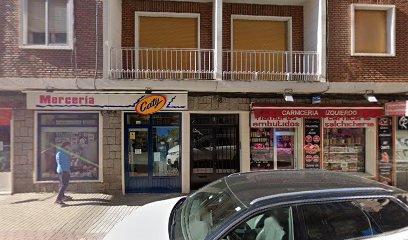
Essential bars & hidden hideouts
Bar La Rua
0.3 km
Experience the lively ambiance of Bar La Rua, a must-visit piano bar in Ávila, blending live music, tapas, and dart games for an unforgettable night.
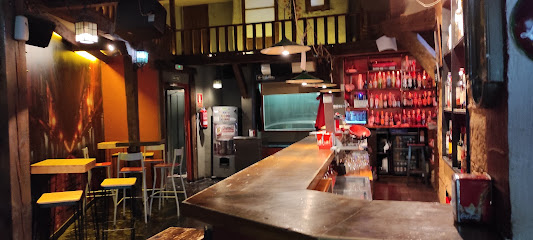
Bar Cayo
0.4 km
Experience the vibrant lounge culture at Bar Cayo in Ávila, where local drinks and a cozy atmosphere come together.
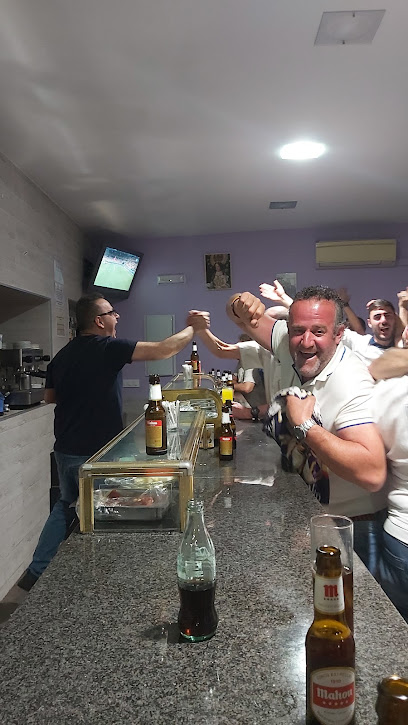
La Roca
0.5 km
Experience authentic Spanish tapas at La Roca in Ávila, where warm ambiance meets delicious cuisine for an unforgettable culinary journey.
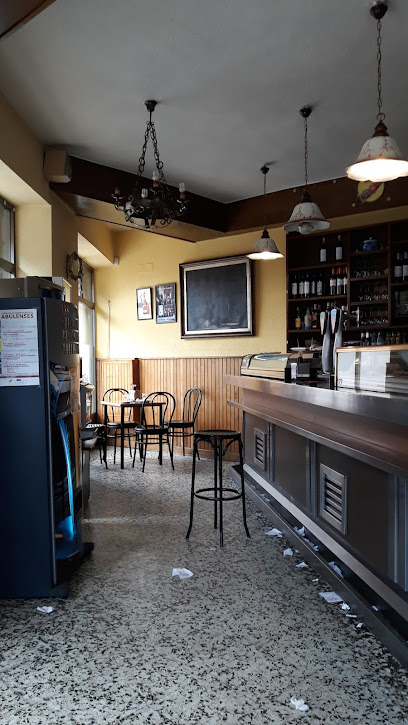
Barraca brewery
0.5 km
Experience the best of local brewing at Barraca Brewery in Ávila, where craft beer meets a cozy atmosphere and rich Spanish culture.
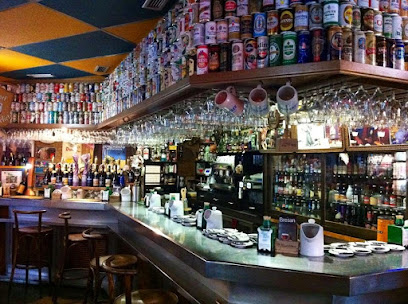
ComeCocos Rock and Game Bar
0.6 km
Experience the vibrant nightlife of Ávila at ComeCocos Rock and Game Bar, where fun, games, and great drinks await every visitor.

The Ha'penny Bridge Irish Pub 3.0
0.7 km
Discover the taste of Ireland in Ávila at The Ha'penny Bridge Irish Pub, where traditional flavors meet a lively atmosphere.
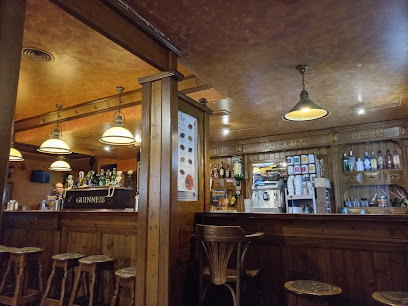
La Oca Cocktail Bar
0.8 km
Discover La Oca Cocktail Bar in Ávila: a blend of vibrant cocktails, local flavors, and a lively atmosphere perfect for socializing and relaxation.
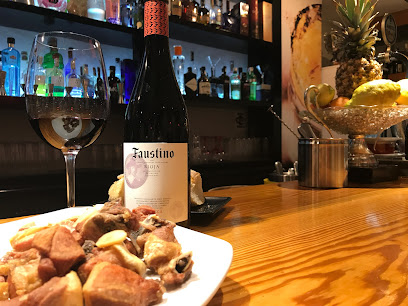
Gu&Go
0.8 km
Experience the vibrant nightlife of Ávila at Gu&Go, a bar renowned for its friendly atmosphere and diverse drink selection.

El Garito
1.0 km
Discover the vibrant atmosphere and authentic flavors at El Garito, Ávila's favorite bar for locals and tourists alike.
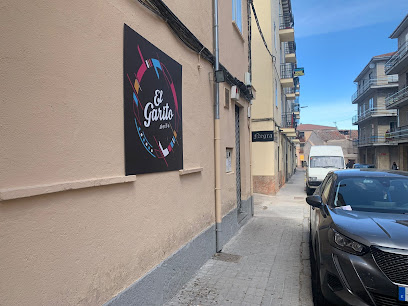
The Black Rose
1.0 km
Discover The Black Rose in Ávila – the perfect bar for a relaxing evening with a delightful drink selection and vibrant ambiance.

Coffee and Tapas Bar Piscis
1.0 km
Savor the culinary spirit of Spain at Coffee and Tapas Bar Piscis in Ávila, where tapas and breakfast unite in a cozy setting.
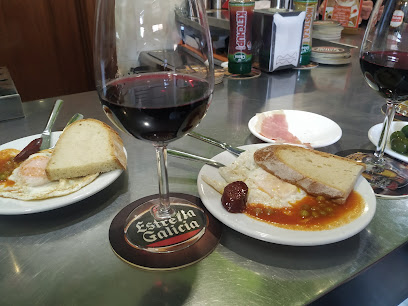
Mojito
1.0 km
Discover the enchanting Mojito Piano Bar in Ávila, where live music and exquisite cocktails create an unforgettable nightlife experience.
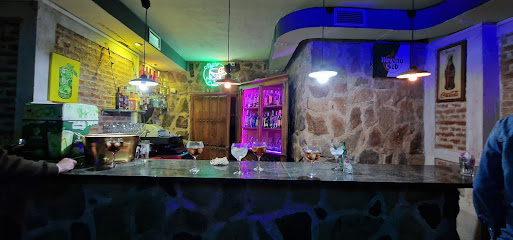
Bar Burbujas
1.0 km
Experience the authentic Spanish bar culture at Bar Burbujas in Ávila, where delightful tapas and a vibrant atmosphere await every visitor.

Bar Montecarlo - Ávila
1.0 km
Savor the rich culinary heritage of Ávila at Bar Montecarlo, a charming tapas bar offering authentic Spanish flavors and a vibrant atmosphere.
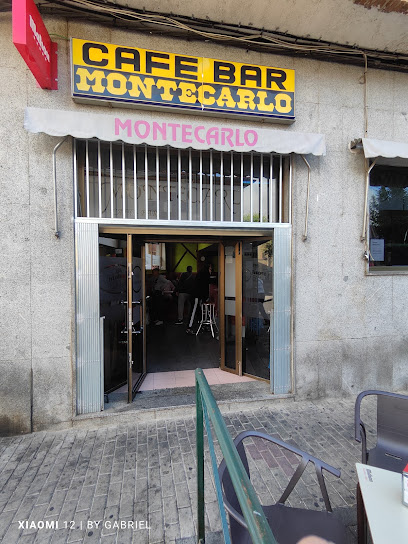
Bar-Cervecería Pepe
1.1 km
Experience the vibrant flavors of Spain at Bar-Cervecería Pepe, a charming tapas bar in the heart of historic Ávila.
